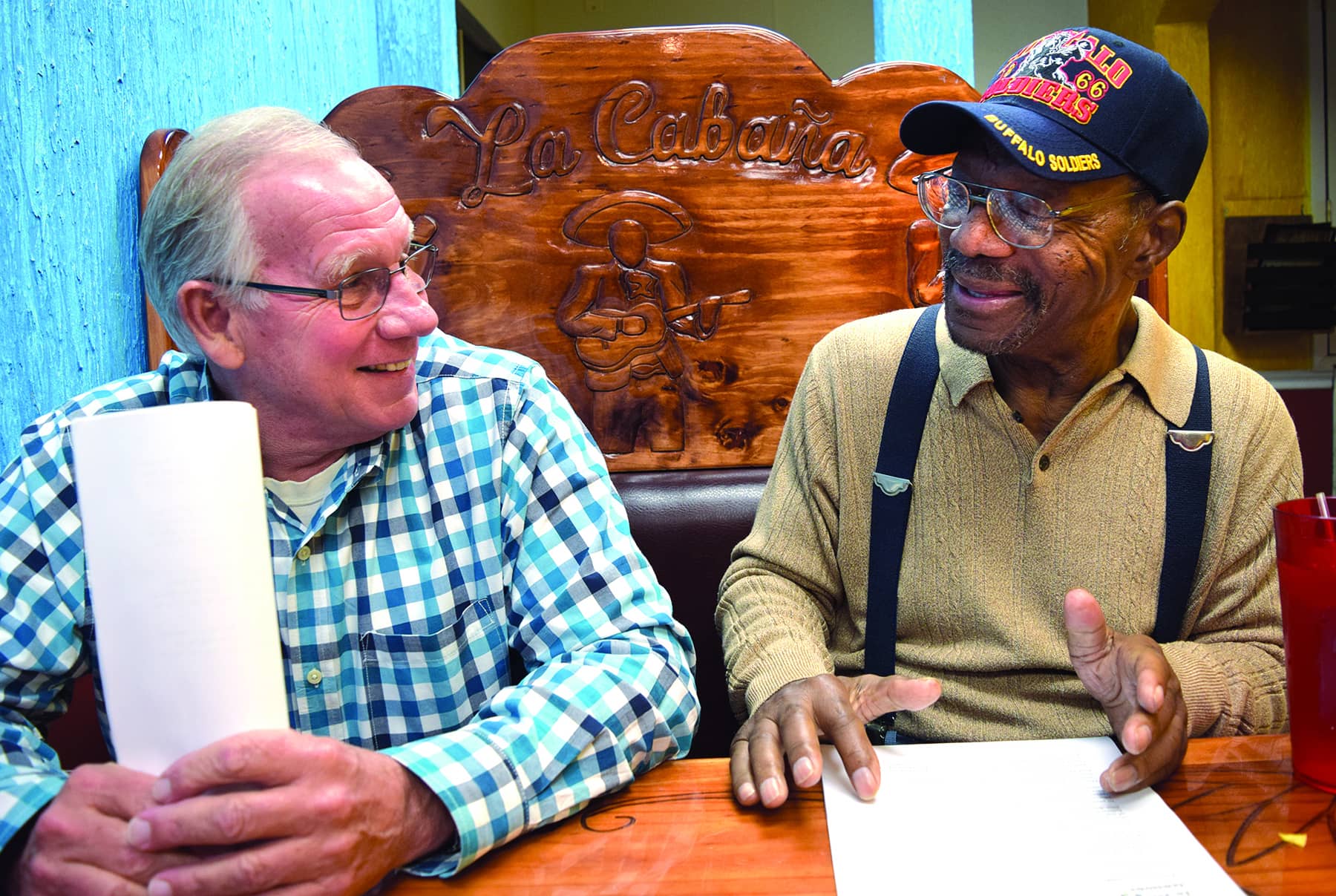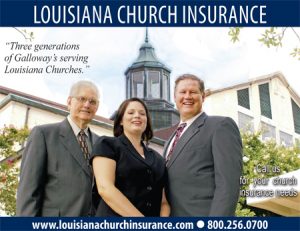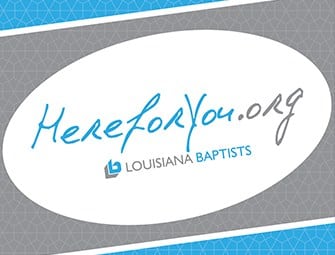By Craig Franklin, Special to the Message
JENA (LBM) — When L&A Missionary Baptist Church Pastor Jimmy Ray Young moved back to Jena from Detroit, Michigan, in 2007, he found his hometown preoccupied in what would become known as the Jena Six case, which involved six black high school students who severely beat a white classmate.
The “L&A” in the name is a tribute to the Louisiana and Arkansas Railway that donated the land for the site of the church’s building.
“I was not the pastor of L&A when I first moved back but I was concerned about what was going on,” said Young, who is African American. “I started attending meetings and other events to see how I could help and during that time I met some lifelong friends from the white community.”
Prior to a massive event on September 20, 2007, where thousands of out-of-town protestors flocked to the town in LaSalle Parish, area pastors organized a community prayer event at First Baptist Church in Jena (a predominately white congregation but includes members of multiple races).
“During the prayer service, we were divided up into smaller groups to pray,” Young said. “It was in that small prayer group I first met Pastor Jimmy Keene.”
Keene, the White pastor of the Temple Baptist Church, a mostly white congregation in Jena.
The two Jimmy’s prayed together in the same small group and became friends. However, it was not until the Jena Revival of 2008 their friendship really blossomed.
This spiritual renewal in the community began in February that year at Midway Baptist Church (also a mostly white congregation) and continued for nine weeks – with services being held in five churches (including — black congregations), the JHS gym, and the Ward 10 ballpark under a tent.
At the time of this massive revival, Young was the new pastor of L&A while Keene was one of the longest-serving pastors in Jena at Temple Baptist Church.
“I was actually out of town for the first two weeks of the revival and when I got back I started attending,” Keene said. “For those who did not experience those services, well, you just can’t explain how powerful they were. God did a work in all of our lives during that revival that changed us forever.”
Perhaps one of the greatest changes was in the area of unity among the town’s black and white residents. Just a year before, outside groups had labeled Jena as one of the most racial towns in America; but Keene, Young, and residents of the town knew differently.
“Jena has always been a friendly town and residents (black and white) had gotten along, but what this revival did was draw us together in a way that only God could,” Keene said. “It went from just getting along to being involved in each others’ lives and Jesus was the difference in that.”
The friendship that occurred from the Jena Revival among Keene and Young and the cooperation between their churches was something neither of them wanted to lose once the services of 2008 concluded.
“That November, we decided to do something neither of us, or our churches, had ever done,” Keene said. “We decided to hold a Thanksgiving service together.”
They agreed to come together the third Sunday of November at L&A and that during the service, the visiting church would sing and preach while the host church would provide the meal afterwards.
“It was a great service and our people loved it so much we decided to do it again the following year,” Young said. “Eventually, we decided to alternate each year, with the same format of the visiting church providing the singing and preaching.”
For 11 years the churches have continued the tradition. On Nov. 17, last year, the service was back at L&A, where Keene once again delivered the message.
“A lot of people talk about unity but you’ve got to put action to your words,” Keene said. “I’m thankful for both of our churches and their desire to keep that unity alive.”
But the two bodies, according to Young, have done much more than just conduct Thanksgiving together.
“We’re always looking for ways to be involved with one another and our people enjoy it,” he said. “And it’s not just church stuff, we also go out to eat with our wives and honestly, just enjoy being with each other. We have a lot in common.”
This year during Easter, Temple members joined with L&A members to conduct an Easter event at Tarver Park. They divided the cost of the event and members worked side-by-side in cooking hamburgers for residents who live there and hiding eggs for the children.
“That revival (in 2008) changed our lives,” Keene said. “It moved me from being ‘program oriented,’ which is the way I was brought up in the Baptist church, to doing things that made a difference – it really changed the entire way I pastor.”
Young also noted it changed Jena as there is more fellowship among the black and white churches.
“There was a turning point in that revival when our District Attorney Reed Walters stood before the black community when the services were held at L&A, and shared his heart,” Young said. “It was at that point walls came down and our people saw him as a man serving God and simply trying his best to do the right thing. When the congregation, both black and white, gathered around him and prayed for him, it changed the entire mentality of our community.”
Young said the difference in Jena and the unity now enjoyed was the result of a movement by God and nothing else.
“That’s the reason God gets all the credit for what happened and what continues to happen,” he said. “Only God can do something like this.”
Although Keene and Young are doing everything they can to keep the unity strong, they both admit there is still much to do in bringing all of the churches together.
“It’s really sad all of our churches are not more unified but to be honest, even when we had that massive move of God not all of our churches were involved in that either,” Keene said. “It’s a long process and it will take God to do it. We haven’t moved any mountains but we are doing all we can to keep striving for complete unity among our churches.”
“We don’t have any grand ideas but our hearts are the same with the common desire to work together for the kingdom of God,” he added.
In regards to Jena’s change regarding black and white unity as a community, both men agree the revival of 2008 helped to bring about a more openness among all residents.
“I’ll give you a for instance,” Keene said. “In our church, we have blacks that attend regularly and nobody thinks anything about it. Young agreed.
“You also see it at our high school,” he added. “Go up there and walk the halls and you’ll see them walking side-by-side, friends, hanging out together and doing stuff together. I think it’s safe to say the black/white relations are much different today than before the revival.”
Both Jimmy’s noted that because of cultural differences, Jena will not be a “utopia” of race relations …”that will come when we all get to Heaven!”
“I mean, we just live differently,” Young said. “We are culturally different but it doesn’t mean we can’t live together, worship together, and serve our Lord together.”
The two men laughed as they thought about their differences.
“We were talking earlier about eating fish and the fact that I like fi lets and he (Young) likes the bone,” Keene said. “In many things we are different but in the main things, like serving Jesus, we are the same.” “And we will not let our cultural differences divide us on our spiritual responsibilities,” Young said. “We know and understand what is important and what is not.”




